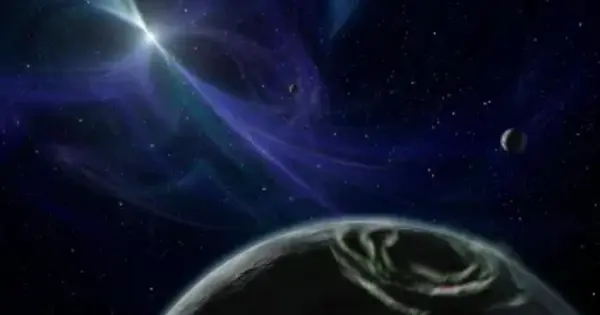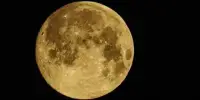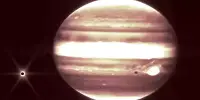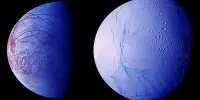The astronomers’ goal is to develop an artificial intelligence algorithm to interpret microlensing events captured by the upcoming Roman Space Telescope and to accelerate the detection of exoplanets orbiting other stars. They succeeded, but the AI revealed something unexpected and profound: the theory used to infer stellar and exoplanetary masses and orbits from observations was flawed. They discovered a theory that explains all types of microlensing events and potential ambiguities in interpreting them by delving into the mathematics.
AI algorithms trained on real-world astronomical observations now outperform astronomers in sifting through massive amounts of data to find new exploding stars, identify new types of galaxies, and detect massive star mergers, accelerating the rate of new discovery in the world’s oldest science.
However, AI, also known as machine learning, can reveal something deeper, according to astronomers at the University of California, Berkeley: previously unknown connections hidden in the complex mathematics arising from general relativity – specifically, how that theory is applied to finding new planets around other stars.
In a paper appearing this week in the journal Nature Astronomy, the researchers describe how an AI algorithm developed to more quickly detect exoplanets when such planetary systems pass in front of a background star and briefly brighten it — a process called gravitational microlensing — revealed that the decades-old theories now used to explain these observations are woefully incomplete.
In 1936, Albert Einstein used his new general relativity theory to demonstrate how the gravity of a foreground star can bend light from a distant star, not only brightening it as seen from Earth, but also splitting it into several points of light or distorting it into a ring, now known as an Einstein ring. This is similar to how a hand lens can focus and magnify sunlight.
People were seeing these microlensing events that were actually exhibiting this new degeneracy but weren’t aware of it. Really, it was just machine learning looking at thousands of events that made it impossible to miss.
Joshua Bloom
When the foreground object is a star with a planet, the light curve becomes more complicated. Furthermore, there are frequently multiple planetary orbits that can equally well explain a given light curve – these are known as degeneracies. That’s where humans simplified the math and missed the bigger picture.
The AI algorithm, on the other hand, pointed to a mathematical way to unify the two major types of degeneracy in interpreting what telescopes detect during microlensing, demonstrating that the two “theories” are actually subsets of a larger theory that, the researchers admit, is likely still incomplete.
“We discovered something new and fundamental about the equations that govern the general relativistic effect of light-bending by two massive bodies thanks to a machine learning inference algorithm we previously developed,” Joshua Bloom wrote in a blog post last year when he uploaded the paper to the arXiv preprint server. Bloom is a UC Berkeley astronomy professor and department chair.
He compared the discovery by UC Berkeley graduate student Keming Zhang to connections that Google’s AI team, DeepMind, recently made between two different areas of mathematics. Taken together, these examples show that AI systems can reveal fundamental associations that humans miss.
Discovering exoplanets with microlensing
More than 5,000 exoplanets, or extrasolar planets, have been discovered orbiting stars in the Milky Way, though only a few have been observed with a telescope because they are too dim. Most have been detected because they cause a Doppler wobble in their host stars’ motions or because they slightly dim the light from the host star when they pass in front of it – transits that were the focus of NASA’s Kepler mission. A third technique, microlensing, has discovered a little more than 100.
The discovery of thousands more exoplanets via microlensing is one of the primary goals of NASA’s Nancy Grace Roman Space Telescope, which is scheduled to launch in 2027. The technique has an advantage over the Doppler and transit techniques in that it can detect lower-mass planets, including those the size of Earth, that are far from their stars, at a distance equivalent to that of Jupiter or Saturn in our solar system.
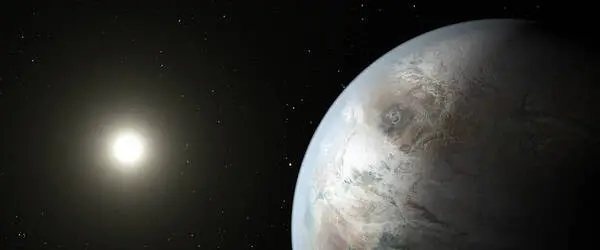
Bloom, Zhang, and their colleagues set out two years ago to develop an AI algorithm to analyze microlensing data faster in order to determine the stellar and planetary masses of these planetary systems, as well as the distances the planets orbit their stars. Such an algorithm would speed up analysis of the hundreds of thousands of events that the Roman telescope is likely to detect in order to find the 1% or less that are caused by exoplanetary systems.
However, one issue that astronomers face is that the observed signal can be ambiguous. When a single foreground star passes in front of a background star, the brightness of the background star rises smoothly to a peak and then falls symmetrically to its original brightness. It is simple to grasp both mathematically and visually.
Zhang then applied the new AI algorithm to microlensing light curves from hundreds of different star and exoplanet orbital configurations and discovered something unusual: there were other ambiguities that the two interpretations did not account for. He came to the conclusion that the commonly used interpretations of microlensing were simply special cases of a larger theory that explains the full range of ambiguities in microlensing events.
“The two previous theories of degeneracy deal with cases where the background star appears to pass close to the foreground star or the foreground planet,” Zhang said. “The AI algorithm showed us hundreds of examples from not only these two cases, but also situations where the star doesn’t pass close to either the star or planet and cannot be explained by either previous theory. That was key to us proposing the new unifying theory.”
Gaudi was initially skeptical, but changed his mind after Zhang provided numerous examples of where the previous two theories did not fit observations and the new theory did. Zhang examined data from two dozen previous papers that reported the discovery of exoplanets via microlensing and discovered that the new theory fit the data better than the previous theories in all cases.
“People were seeing these microlensing events that were actually exhibiting this new degeneracy but weren’t aware of it,” Gaudi explained. “Really, it was just machine learning looking at thousands of events that made it impossible to miss.”
Because there are more degenerate solutions to describe the observations, the new theory technically makes interpretation of microlensing observations more ambiguous. However, the theory clearly shows that viewing the same microlensing event from two perspectives — for example, from Earth and from the orbit of the Roman Space Telescope — makes it easier to determine the correct orbits and masses. That is what astronomers are currently planning, according to Gaudi.
“The AI suggested a new way to look at the lens equation and uncover something really deep about its mathematics,” Bloom explained. “AI is emerging as more than just a blunt tool in our toolbox, but as something that is actually quite clever. Alongside an expert like Keming, the two were able to do something pretty fundamental.”
